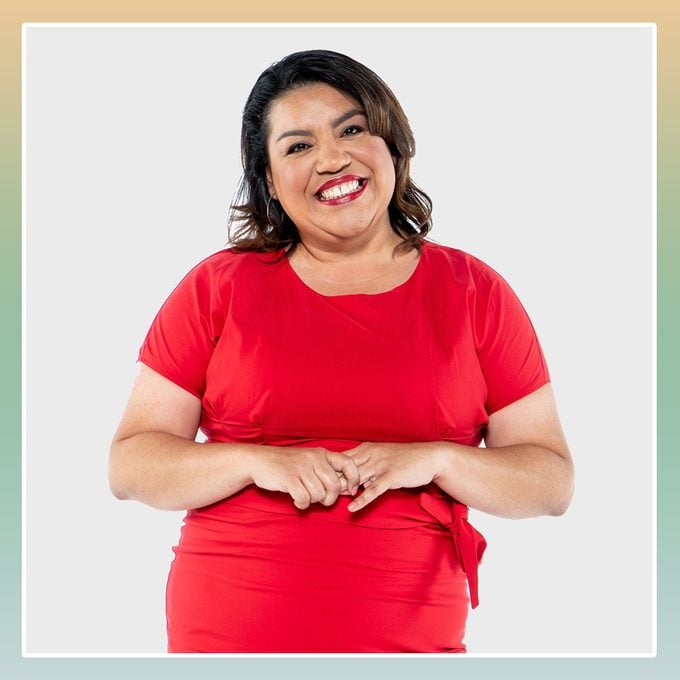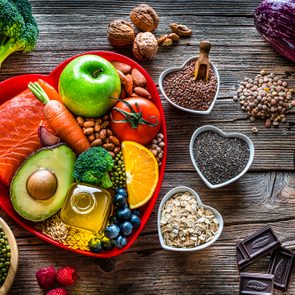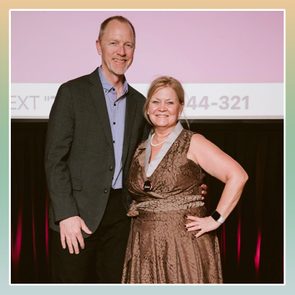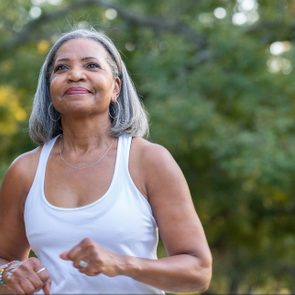My Blood Sugar and Cholesterol Led to a Heart Attack at 43. Here’s What Saved My Life
Updated: Mar. 11, 2022
People with type 2 diabetes are twice as likely to develop—and die from—heart disease. Here's how one woman with high blood sugar and high cholesterol went from triple bypass heart surgery to the healthiest she's been in her life.

High blood sugar and cholesterol
High cholesterol is a silent killer, raising your risk for heart disease mostly without symptoms. The condition often goes hand in hand with diabetes. People living with type 2 diabetes are twice as likely to develop—and die of—cardiovascular disease. Getting your blood sugar under control is one of the best things you can do to help treat high cholesterol and prevent a serious heart problem. Christina Herrera, 47, a high school teacher in Dallas, has firsthand experience with both diseases. As an ambassador for Know Diabetes by Heart, a joint initiative between the American Heart Association and the American Diabetes Association, she strives to educate people about the link between diabetes, heart disease, and stroke.
Young, healthy, and … on the verge of a heart attack
“I just need to make it to the reception desk,” I thought. “If I can do that, it’s proof I don’t need to see a doctor.”
That’s what I kept telling myself as I inched along the hallway at the high school where I teach. It shouldn’t have been that hard to walk down the hall—I’d done it hundreds of times before. But I’d been feeling off all morning.
My heart was racing. I couldn’t catch my breath. My stomach was roiling. And I was sweating profusely.
A friend told me I sounded bad and suggested I see the school nurse to get checked out. I thought he was being ridiculous—I was young, active, and looked healthy—but as I struggled to reach that front desk, I began to realize he might be right.
I didn’t make it past the reception desk. The nurse came out, took one look at me, and said she was calling an ambulance.
At the hospital, they told me that all of my symptoms were indicative of a possible heart attack. My vital signs were concerning enough that the doctors insisted I stay overnight for more testing.
The next morning, the doctor came in to tell me that two of my arteries were 75 percent blocked. I was going to need immediate open-heart surgery.
Turns out, I’d neglected my high cholesterol
As the staff asked me about my medical and family history of heart disease, it dawned on me that I had been diagnosed with high LDL (“bad”) cholesterol back in my 20s.
Apart from delivering the diagnosis, my doctor at the time hadn’t provided any information. No facts about why it was a health risk. No guidance on how to treat it. I hadn’t thought to bring it up again, and I’d never taken care of it.
So at 43 years old, my body had over two decades of plaque buildup.
The hospital staff informed me that my current cholesterol was well over 300 mg/dl, which put me at high risk for a heart attack. Plus, I was in the early stages of type 2 diabetes.
I was in shock. Everything was happening so fast, but the doctor told me that I’d die within a year—likely sooner—if I didn’t have surgery. I agreed, and the team began to prep me. There was barely time for me to call my loved ones.
I went through a whirlwind of emotions
The experience prompted a flurry of emotions: Terror because both my mother and sister had died of complications of diabetes and heart disease. Surprise because I didn’t look like someone who would have heart disease or type 2 diabetes. Worry about what this would mean for my future.
Of course, there was frustration too. I should have paid attention to my cholesterol years earlier, back when I had a chance to lower my LDL level with lifestyle changes or medication.
I was so happy that we’d caught it in time to save my life. And I was grateful for all the doctors and nurses who were taking such good care of me.
Ultimately, I was determined to change my lifestyle and get healthy from then on.
The surgery was a success, but my situation was actually more dire than any of us realized. Once the surgeon opened me up, he found a third blocked artery. So I ended up having triple bypass heart surgery.
After my surgery, the goal was to lower my cholesterol, blood pressure, and blood sugar, treating the diabetes and heart disease at the same time. I was prescribed three different medications to target those health goals.
I’m creating new traditions while honoring my culture
The medications were helpful, but the real healing and recovery was going to come from making serious changes to how I ate, cooked, and exercised. Easier said than done!
As a Latina, food is an important part of my cultural heritage and my ties with my family. I’d learned to cook from my mother, and she definitely didn’t worry about things like grams of sugar, saturated fats, or which cooking methods are the healthiest.
But while there are many traditions of hers I want to preserve, the family pattern of heart disease and diabetes isn’t one of them.
As soon as I got home, I cleaned the junk food out of my cupboards and stopped eating after dinner. I found heart-healthy recipes that would help me keep my cholesterol level down. And I learned to cook low-carb versions of my favorite meals, which helped me manage my blood sugar.
I swapped red meat for salmon, added more green veggies, and learned how to cook with less oil.
I started counting numbers
As an educator, it’s very important to me to learn everything I can about a subject. So after my health scare, I took a deep dive into nutrition.
I read everything I could find about the best way to eat to manage diabetes and cholesterol. It turns out that a lot of the same changes work for both.
Perhaps the best new habit I learned was how to read food labels. I did so for every food I bought. It’s the best way to find out if a food has heart-harming saturated and trans fats. Both are linked to high cholesterol.
I also made a habit of checking the grams of carbohydrate on food labels. It’s surprising how many sneaky places sugar hides! To manage my type 2 diabetes, I set a goal of counting my carb intake and keeping it below a certain number of grams each day. I also tried to steer clear of simple carbohydrates, which are just sugar in a different form.
Then I started counting miles. About six months after my surgery, a good friend challenged me to run a 5K with her. We started training together, and by the one-year anniversary of my open-heart surgery, I accomplished that goal. By the next year, I had run a 10K. Then I discovered a love for triathlons and added swimming and biking to my training schedule.
The whole time, my friends and fiancé kept me motivated and having fun with it. Training and competing in triathlons has become a favorite hobby that my fiancé and I do together as a couple.
I’m living a new (and healthier) life
I had a small setback when the Covid-19 pandemic hit. During quarantine, my fiancé, son, and I spent too much time cooking and eating. We love food, and it was something to take our mind off of the stress of quarantining.
After a few months of that, my cholesterol level started to creep back up, but instead of panicking, I just went back to my healthy habits. It was reassuring to me to know that I could control it.
Now, my cholesterol, blood pressure, and blood sugar are all in the healthy range. I am still taking some medications for them but my doctor said she feels confident enough with my progress to discuss taking me off them in the fall.
Comparing the fall of 2021 with that fateful fall of 2018, when I had my surgery, I can see how far I’ve come. Now I want everyone to know about the link between heart disease and diabetes, how certain ethnic and racial groups are at a higher risk for these illnesses, and that it doesn’t have to be a death sentence.
Be proactive and intentional about your health. Start today, even if it’s changing just one small thing. Little habits build up to big changes over time!
—As told to Charlotte Hilton Andersen




















